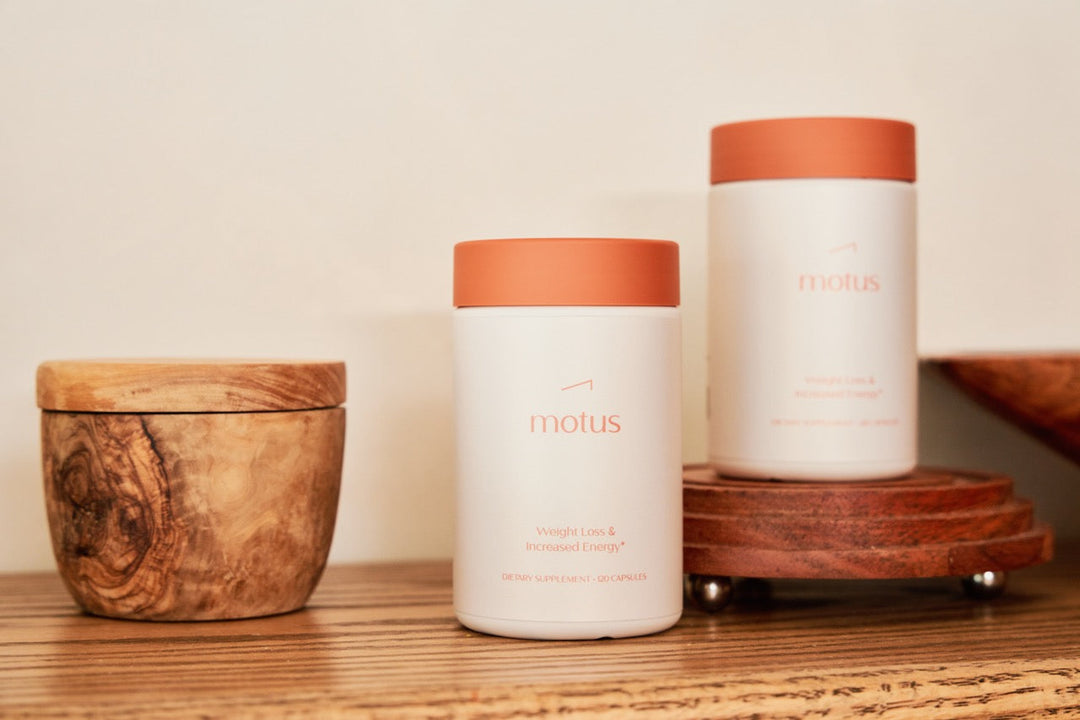Tau Protein and Alzheimer’s: What You Need to Know

Written by Liad Stearns, MS
When most people think of Alzheimer’s disease, they think of amyloid plaques. But another protein plays a major, and arguably more telling, role in how Alzheimer’s unfolds: tau.
In a healthy brain, tau helps neurons function properly by maintaining their structural stability. But when tau becomes damaged, it forms toxic tangles that interfere with brain communication, ultimately leading to cell death. Because abnormal changes in tau track more closely with symptom severity than amyloid, researchers are increasingly looking to tau as a key to understanding, detecting, and potentially slowing the progression of Alzheimer’s.
What Is Tau Protein?
Tau is a small but essential protein found mostly in neurons, the brain cells responsible for transmitting communication signals. Each neuron has a distinctive shape with three main parts: (1) dendrites, which receive incoming signals; (2) the cell body, which processes that information; and (3) a long projection called the axon, which transmits information throughout the neuron and externally to other neurons. Running through the axon is a system of microtubules — hollow, tube-like structures that act like internal highways, transporting nutrients, cellular components, and information across the length of the cell. Without this transport system, communication across the brain would break down.
Tau’s job is to stabilize these microtubules, acting like scaffolding to keep this internal transport system strong and adaptable. Under normal conditions, tau is soluble, flexible, and regulated through a process called phosphorylation, the temporary addition and removal of phosphate groups. Tau binds and unbinds from microtubules as needed, allowing neurons to maintain their shape, function, and communication. But when that balance is disrupted due to changes like aging, stress, or disease, tau can begin to misfold and clump, leading to cellular breakdown and neurodegenerative disease.
What’s the Relationship Between Tau and Alzheimer’s?
In Alzheimer’s disease, tau protein becomes hyperphosphorylated, meaning it collects too many phosphate groups. The abnormal buildup may be driven by oxidative stress, chronic inflammation, or disrupted cellular signaling, though the exact mechanisms are still being explored [1, 2]. When tau is overloaded with phosphates, it can no longer bind to and stabilize microtubules, the structural tracks that support the neuron’s shape and internal transport. Instead, tau detaches, misfolds, and clumps together inside the cell, forming neurofibrillary tangles, one of the hallmarks of Alzheimer’s pathology.
These tangles are toxic neurons. They disrupt communication between cells, interfere with nutrient transport, and eventually trigger cell death. When the brain’s natural clearance systems fail to remove the buildup, the damage spreads. Over time, the accumulation of tangles contributes to brain shrinkage, memory loss, and the progressive cognitive decline seen in Alzheimer’s.
Tau tangles tend to accumulate early in Alzheimer’s, especially in critical brain regions like the hippocampus, a structure essential for memory formation and learning. This helps explain why memory problems are often one of the first signs of the disease.
What makes tau particularly significant is its strong correlation with symptom severity. Unlike amyloid plaques, which can silently build up decades before symptoms appear, tau accumulation tracks more closely with cognitive decline [3]. This makes tau an especially valuable biomarker for diagnosing and staging Alzheimer’s.
New imaging techniques and blood tests are making it easier to detect tau accumulation, a major step forward for early detection. PET imaging using tau-specific tracers allows researchers to visualize tau deposits in living brains, while blood-based assays measuring phosphorylated tau offer less invasive ways to assess disease progression [4]. These tools enable researchers and clinicians to investigate how tau spreads, its overlap with amyloid, and its contribution to various stages of cognitive decline.
Can You Reduce Tau Levels Naturally?
While there’s currently no proven way to remove tau tangles once they’ve formed, emerging research suggests that certain lifestyle choices may help slow or prevent the processes that lead to tau accumulation in the first place. Many of these same choices support overall brain health and may reduce the risk of cognitive decline more broadly.
Here are four key pillars of brain health:
- Nutrition: Diets rich in antioxidants, omega-3s, and anti-inflammatory foods (like the MIND or Mediterranean diets) support cellular repair and help counteract oxidative stress, a known contributor to tau misfolding [5].
- Exercise: Regular physical activity, especially aerobic exercise, is linked to increased brain-derived neurotrophic factor (BDNF), reduced inflammation, and improved vascular health, all of which play protective roles against tau-related damage. Exercise may also enhance the brain’s ability to clear misfolded proteins before they accumulate [6].
- Sleep: Deep, restorative sleep plays a critical role in clearing metabolic waste, including misfolded proteins, by supporting the brain’s glymphatic system. By contrast, poor sleep is associated with greater tau buildup and faster cognitive decline [7].
- Stress management: Chronic stress and elevated cortisol levels can accelerate brain aging and may disrupt the cellular processes that regulate tau phosphorylation [8]. Mind-body practices like meditation, breathing exercises, and time in nature can help support neurological balance and resilience.
While these strategies aren’t a cure, they offer practical, science-backed ways to protect your brain, support healthy aging, and potentially slow the processes that drive neurodegeneration.
Tau vs. Amyloid: What’s the Difference?
Amyloid-beta and tau are the two primary proteins associated with Alzheimer’s, but they affect the brain in different ways.
Amyloid-beta is a protein fragment that, under certain conditions, clumps together outside neurons to form sticky plaques. These amyloid plaques are one of the earliest signs of Alzheimer’s and are believed to trigger a cascade of harmful events, including inflammation, oxidative stress, and damage to nearby brain cells. In some cases, this chain reaction may also contribute to tau misfolding, setting the stage for more widespread neuronal dysfunction [9].
Tau, in contrast, causes damage from within. When tau becomes hyperphosphorylated, it forms tangles inside neurons, destabilizing the cell’s internal scaffolding and interfering with communication and nutrient transport. These neurofibrillary tangles are more closely linked to symptom severity and cognitive decline than amyloid plaques alone.
While researchers once focused heavily on amyloid as the primary driver of Alzheimer’s, there’s growing consensus that tau is more closely associated with disease progression [10]. In other words, amyloid may initiate the disease, but tau is a stronger biomarker as one moves through the clinically symptomatic phases of the disease. Still, the exact relationship between these proteins (and why some people develop pathology without symptoms) remains an active area of research.
Understanding the interplay between amyloid and tau — as well as their independent roles — is helping scientists refine diagnostic tools and develop more targeted therapies for the future [11].
Using Nouro to Prevent Dementia and Support Cognitive Health
At Tonum, we encourage a proactive, lifestyle-first approach to cognitive health that emphasizes nutrition, movement, rest, and stress resilience as the foundation. But we also recognize that targeted, science-backed supplementation can be a powerful tool to help protect the brain and support long-term function.
Nouro is our flagship brain health supplement, specifically formulated to complement healthy habits by supporting the biological processes that underlie memory, focus, and cellular resilience. Its ingredients are backed by emerging research and work across several key pathways known to influence brain aging:
-
Supporting mitochondrial energy production, which helps fuel neurons and maintain cognitive performance
-
Activating antioxidant defenses, which may help counteract oxidative stress, a key contributor to tau misfolding and amyloid plaque formation
-
Modulating the stress response, promoting neurological balance in the face of chronic stressors that can accelerate brain aging
While Nouro is not intended to treat or prevent Alzheimer’s, it’s designed for people who want to stay sharp, energized, and mentally resilient as they age. By nourishing the systems that protect the brain, Nouro can be part of a broader strategy to support cognitive health and reduce risk factors that contribute to neurodegeneration.
Takeaways
Tau protein may not be as widely discussed as amyloid, but its role in Alzheimer’s is profound. In a healthy brain, tau keeps neurons structurally sound. But when it becomes hyperphosphorylated and starts to form tangles, it disrupts communication, blocks nutrient flow, and contributes to cell death, ultimately driving the cognitive decline seen in Alzheimer’s.
The encouraging news? Research into tau is advancing rapidly. From new blood tests and brain imaging tools to lifestyle-based prevention strategies, we're gaining a clearer picture of how tau behaves, and how we may influence it. Just as importantly, we’re learning how everyday actions, from how we sleep to what we eat, can influence the brain’s resilience.
If you’re just starting your journey toward better brain health, you don’t have to take every step at once. Begin with the basics: eat nourishing, anti-inflammatory foods, move your body regularly, prioritize quality sleep, and find ways to manage stress. And if you're looking for additional support, Nouro can be a thoughtful part of your wellness toolkit.
The brain is dynamic, adaptable, and capable of change. And the more we understand proteins like tau, the better able we are to protect what matters most: our ability to think clearly, preserve our memory, and live with clarity and purpose.
References:
Liad Stearns, MS, is a health and science writer with a background in neuroscience and functional medicine. She holds a Master’s degree in neuroscience from Tulane University and has worked in product development in the CGM space, as well as in clinical settings as a functional medicine health coach. Based in San Francisco, Liad specializes in translating complex brain and metabolic health research into clear, actionable content.






